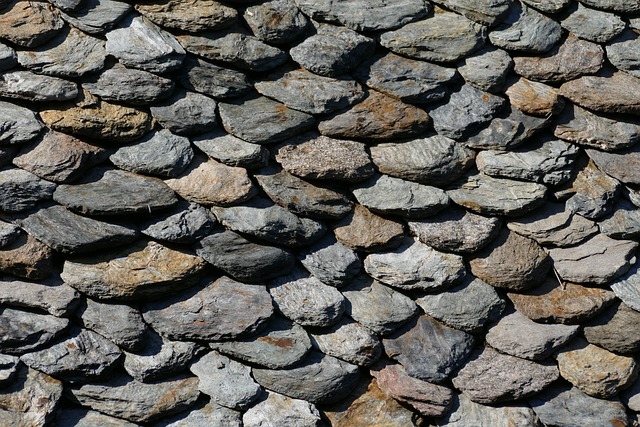Modern roofs have evolved from functional to artistic elements, offering diverse styles that blend form and function. By combining flat and pitched roofs, architects create dynamic, visually appealing designs that merge traditional and contemporary aesthetics. This fusion adds interest to buildings' exteriors, enhances overall looks, and sets structures apart while maintaining structural integrity. Examples like London's Sky Garden and Abu Dhabi's Louvre illustrate this harmonious blend, redefining modern roof aesthetics globally.
In the realm of modern architecture, the fusion of flat and pitched roofs is emerging as a dynamic game-changer. This innovative blend captivates the eye with its unique aesthetic appeal, offering a fresh perspective on roofing design. The article delves into the allure of modern roof aesthetics, exploring the contrasts and complementarities between these two distinct styles. From defining key differences to practical design considerations, we uncover how this fusion creates visually stunning architectural statements.
Understanding the Appeal of Modern Roof Aesthetics
Defining Flat and Pitched Roofs: Key Differences
Flat roofs have long been a staple in modern architecture, known for their sleek and minimalist lines that create a low-profiled, contemporary look. They are characterized by a horizontal surface without any slope or angle, offering a clean canvas for designers to work with. On the other hand, pitched roofs, with their angled surfaces and slopes, have traditionally been associated with classic and traditional architecture. This design element adds dimension and visual interest to buildings, often allowing for more complex drainage systems.
The key difference lies in their structural composition and the way they impact overall building design. Flat roofs are typically supported by a series of beams and trusses, enabling them to support limited weight and creating a more open interior space. Pitched roofs, with their inclined surfaces, require additional structural elements like rafters and braces for stability, which can influence the building’s overall structure and aesthetic. When merged, these two roof styles offer architects a dynamic palette, allowing for unique and eye-catching modern roof aesthetics that blend traditional and contemporary design elements.
Creating Harmony: Blending Styles for Visual Impact
In the realm of architectural design, blending different roof styles can create a dynamic and visually appealing statement, especially when merging flat and pitched roofs. This harmonious combination offers a modern roof aesthetic that captures the essence of contemporary architecture while paying homage to traditional elements. By carefully integrating these contrasting designs, architects can achieve an eye-catching balance that enhances the overall look of a structure.
The key lies in understanding the interplay between the flat, often seen in minimalist or industrial designs, and pitched roofs, typically associated with classic or traditional buildings. When blended effectively, the flat roof’s clean lines and simplicity complement the pitched roof’s angularity and depth, resulting in a captivating visual contrast. This fusion not only adds interest to the building’s exterior but also creates a unique identity, setting it apart from conventional architectural norms.
Design Considerations for a Dynamic Blend
When blending flat and pitched roofs, architects must consider several design elements to achieve a dynamic architectural statement that highlights modern roof aesthetics. The transition between the two roof types should be seamless, creating a harmonious blend that flows naturally across the structure. One effective approach is to use angles and slopes strategically, allowing pitched roofs to transition smoothly into flat sections or vice versa. This can involve creative shingling patterns or varied roofing materials to create visual interest while maintaining structural integrity.
Additionally, playing with shadows and light can enhance the dynamic blend. Flat roofs can be designed with slightly curved edges or integrated solar panels to break up the monotony and cast interesting patterns. Pitched roofs, on the other hand, can be accented with overhangs or skylights that interact with the surrounding flat areas, creating a sense of movement and depth. This interplay of light and shadow not only improves the visual appeal but also contributes to modern roof aesthetics, making the structure stand out in any landscape.
Case Studies: Successful Examples in Architecture
In the realm of architecture, blending flat and pitched roofs is a captivating approach that yields dynamic and visually stunning structures. Several successful case studies across the globe exemplify this harmonious fusion, showcasing modern roof aesthetics that defy conventional norms. For instance, the iconic “Sky Garden” in London features a unique design where curved, pitched roofs seamlessly transition into flat surfaces, creating an ethereal silhouette against the urban skyline. Similarly, the contemporary “Louvre Abu Dhabi” sports a striking roof composition with both angled and horizontal elements, offering a captivating interplay of light and shadow.
These architectural marvels demonstrate how the strategic integration of flat and pitched roofs can enhance a building’s character and appeal. By combining structural practicality with aesthetic allure, architects are able to create bold, modern roofscapes that capture the essence of their surroundings while commanding attention from all angles. This innovative approach not only adds visual interest but also challenges conventional design boundaries, ensuring structures stand out as true game changers in their respective landscapes.
The fusion of flat and pitched roofs offers architects and designers a powerful tool to create dynamic, visually appealing structures. By understanding the appeal of modern roof aesthetics and mastering the blend of contrasting styles, professionals can craft unique architectural statements that stand out. This approach, as illustrated in our case studies, not only enhances the external beauty of buildings but also contributes to their overall character and distinctiveness, ensuring they leave a lasting impression.
